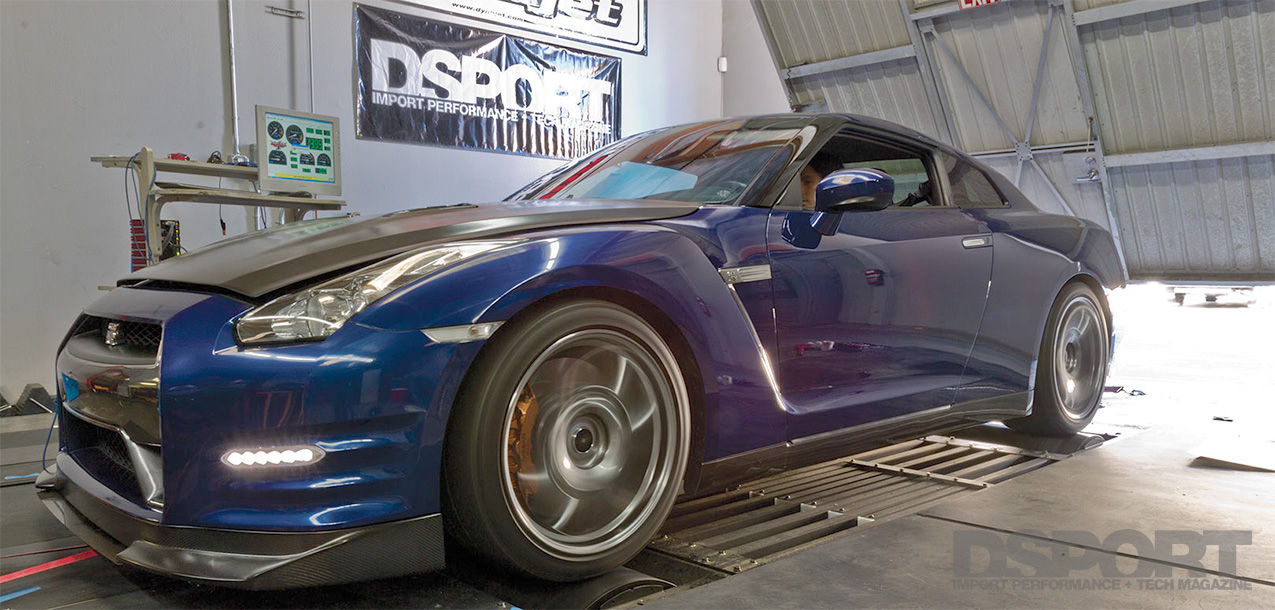Lambda vs AFR
[pullquote]THE MASS OF AIR THAT IS REQUIRED TO COMPLETELY BURN A MASS OF FUEL IS KNOWN AS ITS STOICHIOMETRIC AIR-TO-FUEL MIXTURE. IN THE LAB, THIS IS REFERRED TO AS LAMBDA[/pullquote]Every fuel used in combustion motors has its own chemistry as it relates to air-to-fuel mixture. The mass of air that is required to completely burn a mass of fuel is known as its stoichiometric air-to-fuel mixture. In the laboratory, this ratio is referred to as lambda. In other parts of the world, air-fuel ratio or AFR is used, as this relates to real fuel mass as it is not a unit less proportion. For example, pump fuels require about 14.7 parts of air to completely burn one mass of fuel. With gasoline, the stocihiometric AFR is 14.7:1. E85, in contrast, requires only 9.7 parts of air for every one part fuel or 9.7:1 AFR. Lambda removes this element of specific mass and describes air-to-fuel ratio in terms of the proportion compared to stoichiometric. For example, both 14.7:1 and 9.7:1 equals 1 lambda.
E85 requires similar lambda but much lower AFR.
When comparing air-to-fuel ratios in terms of lambda all three fuels tested here are relatively similar. For peak power, 91-octane liked a lambda of 0.74, while a leaner mixture of 0.82 lambda was best for 100 octane and E85.
Lambda does not consider actual fuel mass. When the same fuel data is plotted in terms of real AFR (gasoline AFR for 91 pump fuel and 100 octane) and E85 AFR for E85, it is clear how much more fuel mass is used compared to air mass in an E85 tune. For peak power, E85 runs an AFR of 7.8:1. A 7.8:1 AFR might sound incredibly rich, but its no more rich than a 12.0:1 AFR on gasoline. The misconception of relative richness at 7.8:1 is reinforced by the common practice of presenting E85 AFR in terms of gasoline AFR equivalent. In fact, figure 3 panel 4 shows E85 fuel ratio in terms of gasoline AFR at about 12.0:1 (see table 1 for Gasoline AFR, E85 AFR, and lambda comparisons).
Fuel volume is limiting factor for some E85 builds
| Pump 91 Octane | 100 Octane | E85 | |
|---|---|---|---|
| Stoichiometric AFR | 14.7:! | 14.7:1 | 9.7:1 |
| Stoichiometric Lambda | 1 | 1 | 1 |
| Power range gasoline equivalent AFR |
10.5 to 12.0:1 | 11.5 to 12.3:1 | 11.5 to 12.6:1 |
| Lambda Power Range | 0.71 to 0.81 | 0.78 to 0.82 | 0.78 to 0.85 |
| Power range (fuel appropriate AFR) |
10.5 to 12.0:1 | 11.5 to 12.3:1 | 7.7 to 8.1:1 |
| Disadvantages | Low octane and low power | Expensive | Poor availability |
| Advantages | Readily available and inexpensive | High Octane | High octane and high energy content |
[pullquote]FOR STOCK TURBO R35 CONFIGURATIONS… THE STEP UP TO E85 REQUIRES SOME PUMP AND INJECTOR UPGRADES[/pullquote]Clearly E85 is the winner when power, reliability and cost are considered. However, there are some drawbacks and considerations. Because E85 requires a higher fuel mass per unit air, the total volume of fuel required is much higher. This is clearly shown in figure 5 which plots injector duty cycle as a function of engine speed. Both 91-octane and 100-octane gasoline required about 30-percent less total fuel volume. At peak power, the 100-octane gasoline required 4,000cc of fuel per minute. In comparison, E85 required 5,700cc per minute of fuel taking the injector duty cycle to over 90 percent. This level of fuel consumption is simply beyond most factory fuel systems. Significantly more fuel pump and injector capacity is required to run E85. In fact, stock R35 injectors do not provide enough fuel for high power on E85 at more than 3,600 RPM (stock R35 injector fuel capacity shown in the gray bar). For stock turbo R35 configurations such as the DSPORT project car, the step up to E85 requires pump and injector upgrades along with some appropriate COBB AccessPort calibration. However, as the capacity for big power increases with turbo size, the volume of E85 can be out of the range of any conventional pump upgrade. One-thousand-plus horsepower R35s are a reality. Those running E85 use six or more 2,200 cc/min injectors along with three or more high flow fuel pumps. Even then, it’s entirely possible to max out the six 2,200 cc/min injectors.
Future for Project R35
A built engine, upgraded transmission and bigger turbos are in the cards for DSPORT’s Project R35. With more power, there will be more responsibility for proper tuning. DSPORT will keep you updated so you can plan an R35 build of your own.
Transparency in tuning: No secrets at DSPORT / COBB GT-R tune files available to the public
The DSPORT Project R35 was tuned with COBB AccessTuner tools starting with off-the-shelf maps available to every GT-R AccessPort customer. For those of you interested in knowing more about the DSPORT R35 tune, feel free to contact the GT-R experts at COBB:
gtr.experts@cobbtuning.com


